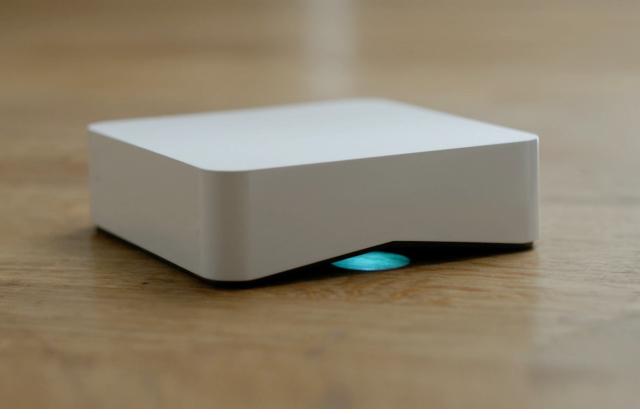
Bitdefender’s Box hopes to resolve that problem permanently. The tiny white router intercepts network traffic and scans it for signs of malicious activity. In this sense its purpose is similar to the real-time protection offered by many antivirus suites. Packets that appear eager to behave badly are blocked, while those that appear normal pass unaltered.
This alone makes the Box different from most routers, but there’s more to it. Traditional routers are essentially buy-it-and-forget-it devices. Firmware updates are occasionally released, but they can be difficult for users to install and most make no effort to proactively remind owners. Box, on the other hand, will be frequently updated with new information that helps detect the latest threats. Again, this is similar to how antivirus software already works, but Bitdefender’s router can stop threats before they even reach your computer.
Related: Study reveals Wi-Fi routers are easy to hackIt’ll also offer a way to secure devices that connect to the Internet but have no built-in virus countermeasures. Examples include televisions, smart appliances, game consoles and smart home systems like Google’s Nest. While these devices are not widely a target at present they could become the focus of exploits in the future, and most can’t be easily updated to close security holes.
Scanning packets could reduce network performance, but Bitdefender claims it has avoided that problem. This is not because of the router’s specifications, which include a mere 400MHz MIPS processor, 16MB of flash storage and 64MB of RAM (yes, that’s megabytes, not gigs). Instead performance is obtained through selective scanning. Box looks at information such as the sender’s URL, IP address and basic packet data. This is compared with a database of known threats. Surprisingly, Bitdefender can even provide protection when you’re away from your home network through a VPN connection with the Box.
Related: The best VPN services compared802.11ac Wi-Fi is not supported, so users won’t be able to obtain the quickest speeds if the device is used as the primary router. Fortunately the Box can be used in conjunction with another router that supports the latest standard. Users will be able to manage it with a smartphone app available to Android and iOS owners.
Bitdefener says its router will be $199 and require a $99 annual subscription. The first year is free. That makes it quite pricey, but we’re not aware of another consumer product that serves the same role; if it works well, it’ll have a niche to itself. The company will start taking orders in mid-December and plans to ship the first units in January.
Editors' Recommendations
- Best Antivirus Deals: Protect your PC or Mac from just $25
- Oh great, new malware lets hackers hijack your Wi-Fi router
- 4 things you can do right now to prep your Wi-Fi network for holiday houseguests
- 5 Ways to optimize your home Wi-Fi network for remote school and work
- Without a firewall, the door to your smart home is left wide open


